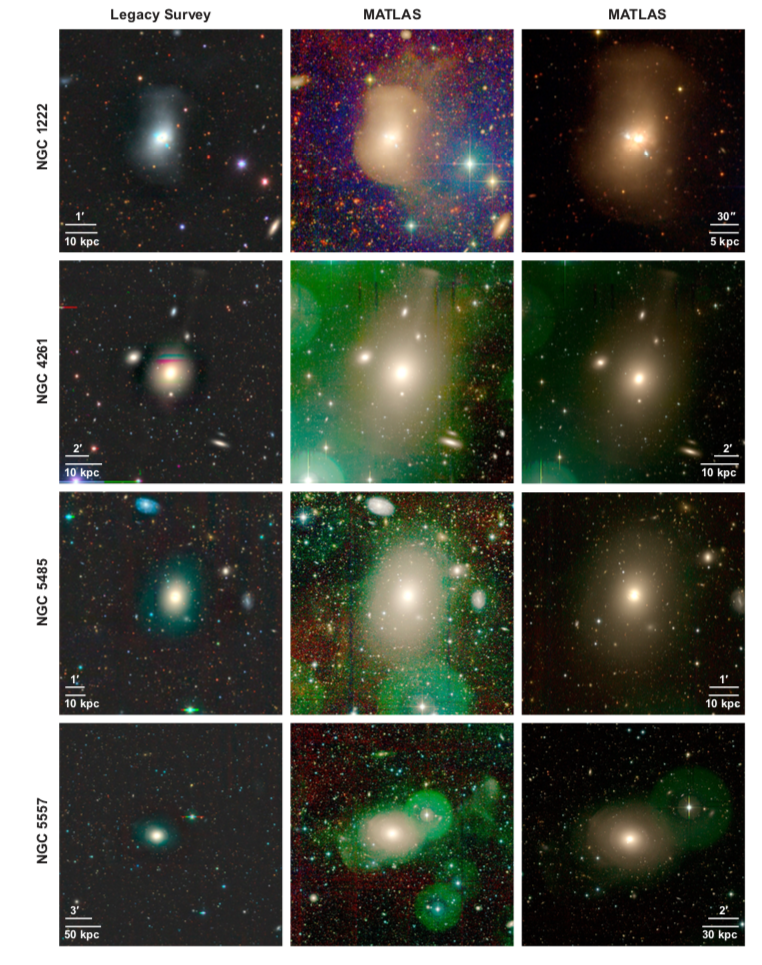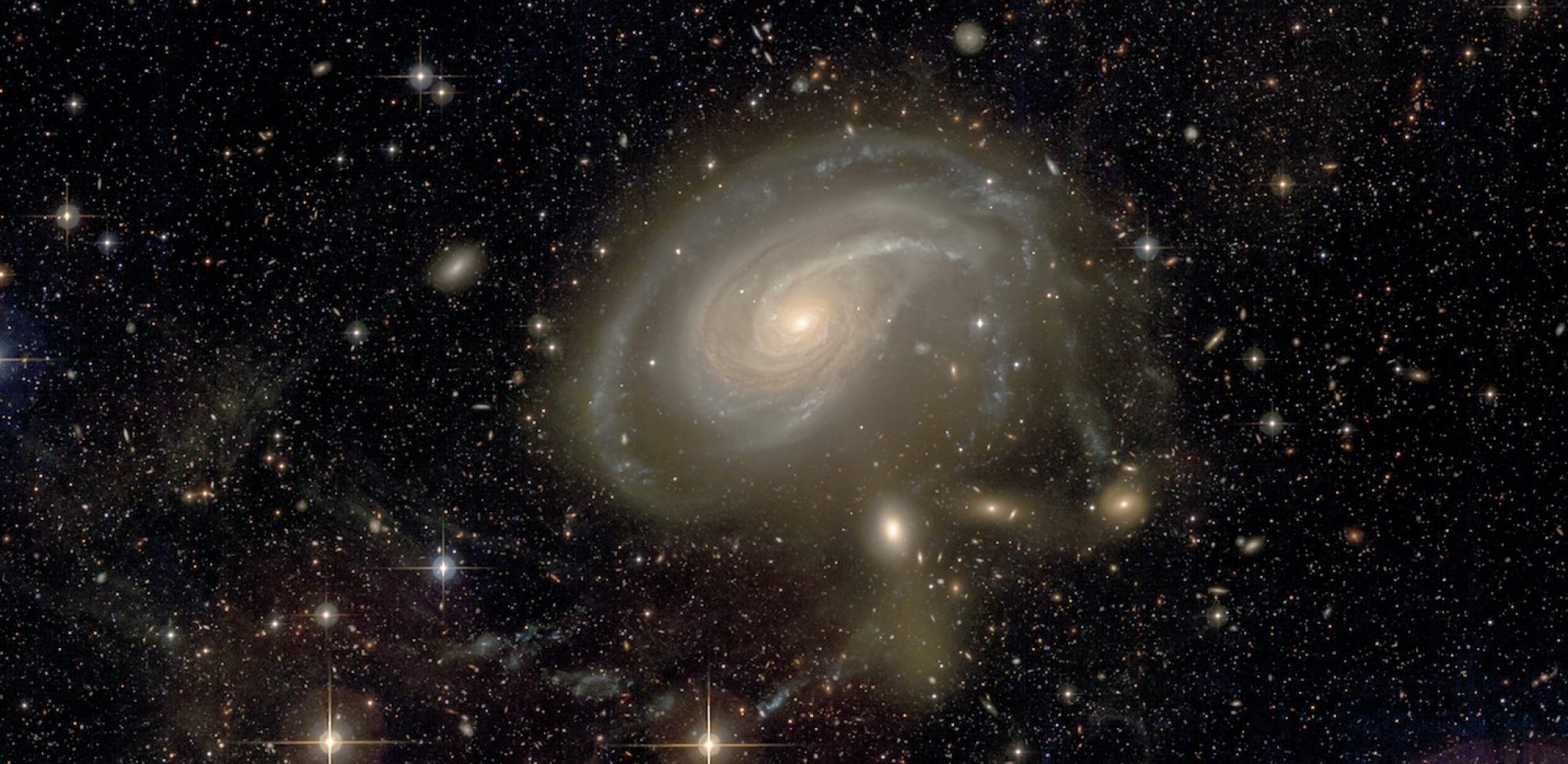
Context. A small fraction of early-type galaxies (ETGs) show prolate rotation, i.e. they rotate around their long photometric axis. In simulations, certain configurations of galaxy mergers are known to produce this type of rotation.
Aims. We investigate the association of prolate rotation and signs of (past) galaxy interactions among the observed galaxies.
Methods. We collected a sample of 19 nearby ETGs with distinct prolate rotation from the literature and inspected their surface- brightness maps for interaction signs – 18 in archival images and one in a new image obtained with the Milankovic ́ telescope. Results. We discovered tidal tails, shells, or asymmetric/disturbed stellar halos in all the 19 prolate rotators. Comparing this with the frequency of tidal disturbance among the general sample of ETGs of a roughly similar mass range and surface-brightness limit, we found that the chance probability of such an observation is only 0.00087. We also found a significant overabundance of prolate rotators that are hosting multiple stellar shells. The visible tidal features imply a relatively recent merger event. That agrees with the Illustris large-scale cosmological hydrodynamical simulation, where prolate rotators are predominantly formed in major mergers during the last 6 Gyr. This work demonstrates the benefits of combining deep optical photometry with integral-field spectroscopy for the understanding of the formation of galaxies.

